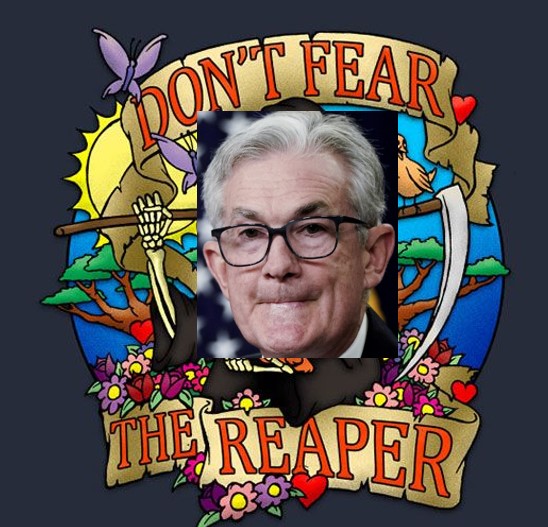
By Michael O’Neill
Traders do not fear the Fed. Not anymore.
They haven’t forgiven policymakers for missing the signs that post-pandemic demand would lead to an inflation spiral. That oversight led to the most rapid rate hikes in forty years which is tipping the American economy into a recession.
The FOMC minutes revealed that policymakers’ use a basketball rather than a crystal ball. Several policymakers wanted to leave interest rates unchanged in order to give themselves more time to assess the impact of the recent financial crisis and the impact of the cumulative tightening.
Some participants wanted to hike by 50 bps due to the persistently high inflation and strength of the recent data but were dissuaded due to the fall-out from the Silicon Valley Bank bankruptcy.
The minutes repeated the monetary policy statement comment that “members anticipated that some additional policy firming may be appropriate.”
Traders do not fear inflation either.
They jumped all over the March inflation report that showed headline CPI dropped from 6.0% y/y to 5.0%. Core-CPI rose a tick to 5.6% from 5.5%, but the results were ignored. Markets focused on the 1.0% headline drop and concluded the next Fed hike would be the last and rates would be cut two months later.
That view is at odds with the FOMC Summary of Projections which indicated US rates would remain unchanged for 2023.
CME interest rate futures traders suggest there is a 66% chance of a 25 bp rate hike to 5.25% May 3, and 68% odds that rates drop to 5.0% on July 26.
They obviously do not consider that the latest Opec production cuts will have a noticeable inflationary impact. Neither does the US Energy Information Administration. Its April Short-Term energy Outlook (STEO) forecast the global oil market will be in balance over this year. They are more worried about downward risks to consumption if banking concerns become elevated.
The Bank of Canada isn’t very worried about inflation either. Tiff Macklem said, “we are encouraged that inflation is declining” and pointed out that the more timely three-month-rate of inflation has dropped to 1.6%. He proudly predicted CPI would drop to 3.0% by the summer, while noting that Q1 “GDP growth appeared stronger than we projected,” and that employment growth was “surprisingly strong.”
Something smells fishy.
The BoC publishes for measures of inflation on the front page of its website.

Source: Bank of Canada
I looked really hard and could not find any mention of the three-month-rate of inflation. Is this a new metric? Why hasn’t he emphasised it before? A cynic would suggest he is scouring for data to fit his message.
The BoC is on hold and the Fed is expected to start easing in the summer. That is good news for the Canadian dollar.
USDCAD lost 2.07% YTD as of noon hour on April 13. It is a better performance than the Australian (1.09%) and New Zealand (1.48%) but pales in the face of a 5.51% rally in the Swiss franc and a 5.19% gain in the British pound.
The USDCAD losses have very little to do with domestic issues as the bulk of the selling pressure stems from broad-based US dollar selling. The market believes the Fed is very near its “terminal rate” and will soon embark on a new monetary easing cycle.
The US banking crisis opened a window to the impact of 475 bps in tightening on the reserves of US banks after the steep rise in Treasury yields left many small banks underwater on their bond holdings. Bloomberg estimated that US banks were wearing $620 billion of bond losses as of March 31.
The risk of igniting another US banking crisis by hiking rates reinforces the belief the Fed is close to pausing. In addition, it may also put an end to the quantitative tightening program (QT) which will weigh on USDCAD.
The recent bond rally sharply narrowed the spread between Canadian and US bonds and eliminated one level of support for USDCAD.
The US dollar is also suffering from the European Central Bank’s interest rate outlook. The ECB was late to the rate hiking party and still have another 50 bps of rate hikes in the pipeline. EURUSD strength suggests improved global risk sentiment which leads to broad US dollar selling.
Opec and Russia also did their part to sink USDCAD. West Texas Intermediate rallied 30% in less than a month, which helped drive USDCAD from 1.3755 to 1.3350 on April 13.
The USDCAD technicals are bearish while trading below 1.3560, followed by the drop below the 200-day moving average targeting 1.3220, which if broken will extend losses to 1.2960.
Although traders do not fear the reaper, the Fed or being long Canadian dollars, black swan events have away of fouling the waters. Be alert. Be hedged.





